#anna zinnemann
Text

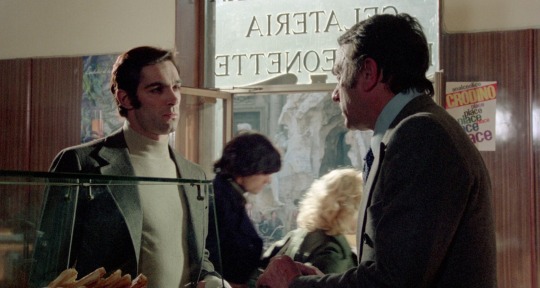
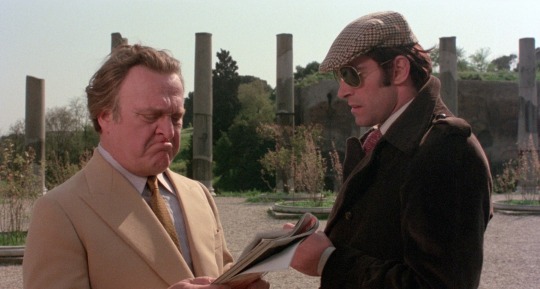

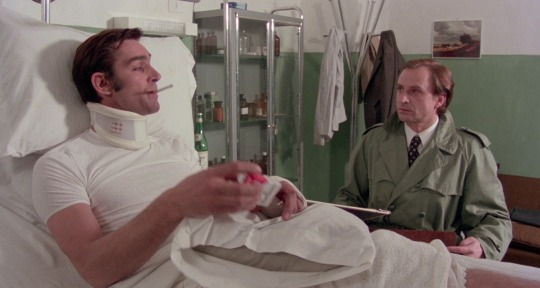



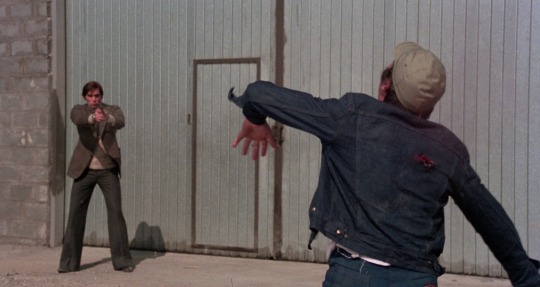
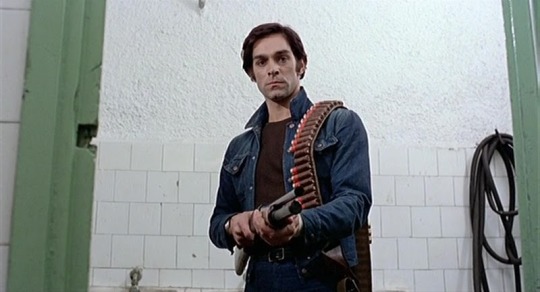
Il grande racket (The Big Racket, 1976)
"Great job! Now they'll cover it all up and regroup. All my work will have been for nothing."
"Work? It was all beating and shooting. We can't use the same methods that criminals use. Cops are supposed to respect the law."
#il grande racket#the big racket#italian cinema#poliziotteschi#enzo g. castellari#1976#massimo de rita#dino maiuri#fabio testi#vincent gardenia#renzo palmer#glauco onorato#orso maria guerrini#marcella michelangeli#romano puppo#sal borgese#antonio marsina#joshua sinclair#anna zinnemann#daniele dublino#guido de angelis#maurizio de angelis#blisteringly dark euro crime thriller which starts punchy and ends by kicking you apart. dumb as rocks and with a reactionary bent which#doesn't bear close scrutiny‚ but within its own genre this is close to perfection. action setpieces to rival the biggest and bloodiest of#american contemporaries and a neat twist on the usual lone wolf cop vigilante thing‚ as Testi's discredited cop assembles a dirty dozen#style group of the wronged and the vengeful to do what the police can't and take down the biggest crime cartel italy has ever seen#it's a heart of darkness into the years of lead‚ with shocking scenes of police officers massacred and uncomfortably cathartic moments#of summary justice doled out by snipers and killers‚ because even they aren't the lowest of the low here. refused a release in the uk in 76#and that wasn't much of a surprise: this is bleakly fatalistic mob justice cinema with multiple scenes of unrelenting violence#it's also‚ somehow‚ really really entertaining. pure visceral howls of hateful justice. i am not immune.
7 notes
·
View notes
Text
14 marzo … ricordiamo …
14 marzo … ricordiamo …
#semprevivineiricordi #nomidaricordare #personaggiimportanti #perfettamentechic
2022: Akira Takarada, attore giapponese principalmente conosciuto per la serie di film Godzilla. Ha sposato Akiko Kojima, modella giapponese e Miss Universo 1959, nel 1966 divorziano nel 1984; hanno avuto una figlia, Michiru Kojima, nel 1967. (n.1934)
2022: Anna Montinari, attrice teatrale e modella italiana. Ha frequentato l’Accademia nazionale d’arte drammatica di Roma, ha iniziato la carriera…
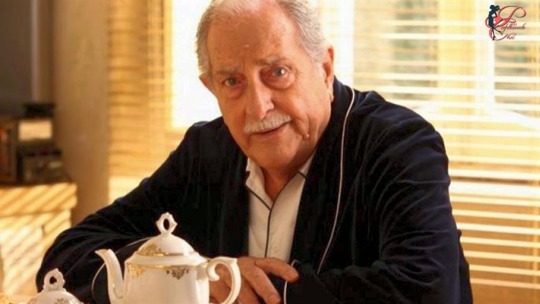
View On WordPress
#14 marzo#Akira Takarada#Akira Yoshizawa#Alain Bashung#Alessandro Cutolo#Alexander Granach#Alfred Zinnemann#Anna Montinari#Bob Burns#Carl Sebastian Martin Wery#Carl Wery#Edna Woolman Allaway#Edna Woolman Chase#Edythe Marrenner#Enrique Tomás Delgado Jiménez#Fred Zinnemann#Giangiacomo Feltrinelli#Helen Ferguson#Henry Darrow#Ivan Rassimov#Jean Poiré#Jean Poiret#Jessaja Gronach#Karl Marx#Marcel Rochas#Maurice Julien Marie Robinet#Maurice Ronet#Morti 14 marzo#Morti oggi#Peter Aurness
0 notes
Text
Greta Garbo, the “Furious Lesbian,” and a Classic Hollywood Love Triangle
In this exclusive excerpt from her new biography of the silent star, author Lois Banner explores the period in the early 1930s when Garbo was entangled with both the acting coach Salka Viertel and the glamorous writer Mercedes de Acosta.
BY LOIS BANNER
SEPTEMBER 6, 2023

GETTY IMAGES
reta Garbo began her acting career in her native Sweden and moved to Hollywood in 1925, where she quickly became one of the industry’s most beloved stars. She was in a relationship with her frequent co-star John Gilbert, who also served as her acting coach. At the dawn of the 1930s their relationship was over, but Garbo’s star remained on the rise.
After the break with John Gilbert, Garbo had no acting coach. In April 1930, a year after she and Gilbert parted, she found a new coach at a party at the director Ernst Lubitsch’s home, a center for the Hollywood German community, where she met Salka Viertel, a Berlin stage actress. Garbo and Salka spent most of the evening talking on the terrace. Salka, who was sixteen years older than Garbo, found her “hypersensitive, although of a steely resistance,” while her opinions about people were “just, sharp, and objective.”
Salka had come to Hollywood in 1928 from Berlin, at the age of thirty-one, with her husband, Berthold, and their three sons, David, Peter, and Christopher. Fox studios had hired Berthold, a writer and director known in Germany. Salka had been a successful actress in Berlin, but she was rarely cast in roles in Hollywood films; she was, she said, “too old” and “not beautiful enough.”

Garbo and Salka Viertel in a scene of the German version of Anna Christie (1930).BY METRO-GOLDWYN-MAYER/DE CARVALHO COLLECTION/GETTY IMAGES.
Salka had a sensual glow. For several years she had an affair with her next-door neighbor, Oliver Garrett, a successful Hollywood screenwriter, who helped her navigate the ebbs and flows of Hollywood. She then had a long affair with Gottfried Reinhardt, the son of Max Reinhardt, the Berlin theatrical impresario. Gottfried was twenty years younger than she, but he was stocky, with a solemn manner, and they didn’t seem that different in age. The Viertels had an open marriage, and Berthold was so often in Europe and with other women that Gottfried often lived in her home and functioned as her husband. He worked as an assistant producer at MGM.
In 1929 the Viertels moved to a large house in Santa Monica Canyon, near the beach. Salka held Sunday afternoon get-togethers, with coffee and homemade cake, conversation, ping-pong, and walks on the beach. Garbo didn’t always attend Salka’s salons, partly because of attacks of shyness, but also because eventually she sometimes went to other Hollywood gatherings—at Vicki Baum’s home in Pacific Palisades, for example, a few miles up the coast from Santa Monica, or at director George Cukor’s home in the Hollywood Hills. Baum, from Berlin, wrote the novel on which Grand Hotel was based. Cukor, who was homosexual, held luncheons for gender-crossing friends. His home was a showpiece, with six acres of gardens terraced up a hill.
Salka often joined Garbo in hiking in the hills or swimming in the ocean early in the morning. Following Swedish practice, they swam in the nude. When together, they discussed films, the theater, literature, and their lives. Both Garbo and Salka wanted to return to Europe, but they felt they couldn’t. Garbo had her screen career and her drive to be financially independent, while Salka and the boys were dependent on Berthold, still employed by Hollywood studios. Jacques Feyder suggested that Salka play Marthy, the prostitute in Anna Christie, in MGM’s German version of the film, which he was to direct, and Garbo agreed. She and Salka grew close; Salka was the mother Garbo wanted; Garbo was the daughter in Salka’s family of males.
Fred Zinnemann, Berthold’s assistant, later an eminent Hollywood director, described Salka as “one of the world’s most generous and opinionated women,” and she dominated Garbo. At their meetings, Salka was the star and Garbo the audience. After reading a biography of Sweden’s Queen Christina, Salka suggested to Garbo that she play the queen in a biopic. Garbo agreed—and suggested that Salka write the screenplay. Salka wasn’t a writer, but Garbo knew that, at her request, Thalberg would partner Salka with MGM’s best writers. Garbo gave Salka a career—as a writer and an acting coach. Salka participated in writing the screenplays for Queen Christina and most of Garbo’s subsequent films. Deeply impressed by Salka, Garbo developed an abiding love for her. But Salka was never certain how she felt about Garbo.
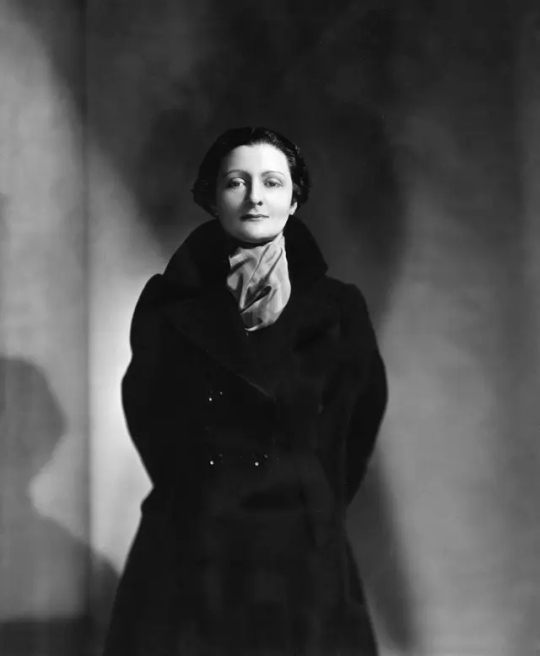
Mercedes de AcostaBY NICKOLAS MURAY/ULLSTEIN BILD/GETTY IMAGES.
In the summer of 1931, while Garbo was making Susan Lenox: Her Fall and Rise, Salka was persuaded to introduce Garbo to Mercedes de Acosta, who had come to Hollywood to write a screenplay for Pola Negri—and to seduce Garbo. Mercedes had heard through the lesbian grapevine that Garbo wasn’t a lesbian, but she could easily become one. De Acosta, openly lesbian, had a reputation for skill as a lover, and she was on a mission to turn prominent actresses into lesbians. It’s not surprising that she wanted to meet Garbo, but Salka was worried about what might happen if that meeting took place.
Mercedes de Acosta, born to parents descended from the Spanish nobility, was raised in a wealthy section of New York’s West Side. She met celebrities through her sister Rita Lydig. Eighteen years older than Mercedes, Rita was a fabled beauty, a leader in New York high society, and a reformer who worked for women’s suffrage and birth control, as well as labor rights. The de Acosta family once had money, but Rita’s and Mercedes’s money came from their wealthy husbands.
Rita introduced Mercedes to her famous friends: the actress Sarah Bernhardt, the sculptor Auguste Rodin, Jack and Ethel Barrymore of the famed Barrymore acting family, and others. Raised a Catholic, Mercedes attended Catholic schools. In 1914 Vogue featured her as a New York debutante, and in 1920 she married Abram Poole, a New York society painter. She followed Rita into feminism, working for women’s suffrage and then for the Lucy Stone League, formed to persuade women to keep their maiden names after marriage, following the example of Lucy Stone, a leader in the nineteenth-century U.S. women’s movement.
Like Rita, Mercedes wore distinctive clothing, but she had her own style. She often wore capes, tricorne hats, and pointed shoes with silver buckles on them, looking like a pirate. She was also known for wearing a dark coat fitted at the waist, with wide lapels and a full skirt, designed by the Paris couturier Paul Poiret. Garbo liked the coat so much that she had a copy of it made for her. Mercedes dyed her hair black, painted her face white, and wore blood-red lipstick—prompting some people to call her “Madame Dracula.”
Mercedes wore only black and white clothes, so Garbo and Salka called her “Black and White.” Aldous Huxley described her as “a small but most exquisite woman, both in features and figure, and in the manner of her dress.” She was five feet four inches tall. Close to Cecil Beaton, she provided him with information about Garbo to use in his writing about her, until he and Garbo became close friends in the late 1940s.
Mercedes lived a dramatic life, engaging in what Cecil Beaton called “glorious enthusiasms.” She also had periods of deep depression. Until she was seven and saw the male sex organ, she thought she was a boy. Discovering her mistake devastated her, until she formed romantic friendships with girls and studied ancient Greek ideas of sex. She interpreted those ideas as suggesting that everyone has a masculine and a feminine side. She took up lesbianism as a cause. Cecil Beaton called her “a furious lesbian.”
Mercedes studied Hindu and Buddhist texts and followed Eastern mystics; her knowledge of Eastern religions was part of her attraction to Garbo, who continually looked for a spiritual path and never seemed to find one. And Mercedes always knew about the latest healers and remedies. She consulted Dr. Henry Bieler, who promoted vegetarianism. Not long after she met Mercedes, Garbo consulted Bieler and became a vegetarian.
Mercedes knew the two great dramatic actresses of the turn of the twentieth century: Sarah Bernhardt and Eleonora Duse. She had had affairs with prominent female performers, including Isadora Duncan, a founder of modern dance, who promoted dress reform; the English actress Eva La Gallienne, with whom she exchanged wedding rings; and the Russian actress Alla Nazimova. When Nazimova came to Hollywood in 1916 to act in films, she formed a Sapphic circle, which some say was called “the sewing circle.” Isadora Duncan wrote passionate poems to Mercedes, extolling her sexual ability and writing paeans to her beautiful white hands.
Once Salka introduced Mercedes to Garbo in July 1931, Garbo initially fell for this aristocrat, with her tales of famous friends, knowledge of Eastern religions, and skill at sex. After finishing Susan Lenox that summer, Garbo took Mercedes to a cabin on an island in a lake in the High Sierras, where they swam, caught fish, talked, and began an affair. Mercedes was known for her sexual skill and Garbo for “the unbounded freedom of her life.”
After her trip to the High Sierras with Mercedes, Garbo displayed deep feelings for Salka, which suggests that the Sierra trip was a failure, that she was comparing Salka and Mercedes as friends and lovers, or that she was forming a triangle with the two of them. On September 18, which was Garbo’s birthday, she seduced Salka, who described what happened in a letter to Berthold—her confidante as well as her husband. Greta decorated her house with white gardenias, a symbol of femininity and of secret love. She served Champagne and played Sapphic songs on the gramophone. It was, according to Salka, “a gigantic temptation apparatus.” She concluded: “So we were together—it was harmonious and beautiful.”
By the late fall, Salka’s infatuation with Garbo had dissipated for a time, as Garbo became demanding. She was filming Mata Hari and spending time with Mercedes, in the first flush of their romance. Then, looking at Garbo one day, Salka realized that not only did she slouch but she also had a hump on her back. Salka wrote to Berthold, who was in New York, about the hump, but he replied that she should forget it because Garbo had influence in Hollywood and could damage his career. Salka stayed with Garbo as a close friend and mentor but kept her at a distance by having affairs with men, first with Oliver Garrett and then with Gottfried Reinhardt. After the episode of sex in 1931 between Garbo and Salka, there is no further evidence of sexual relations between them.

Greta Garbo as Anna Karenina and John Gilbert as Alexei Vronsky in a scene from the silent movie Love (1927). FROM BETTMANN/GETTY IMAGES.
Even before Mercedes appeared in Garbo’s life in the summer of 1931, there were references to Garbo’s presumed lesbianism in the Hollywood trade journals and in movie magazines. In 1929, Variety’s review of Garbo’s movie The Single Standard slyly referred to Garbo’s free love views. In January 1931, in a review of Garbo’s movie Inspiration, a Variety writer called her “one of the strangest personalities of all the freaks or odd ones that have littered Hollywood for years.” And Mercedes persuaded Garbo to become more open about her masculinity. The Hollywood Reporter, Hollywood’s first tabloid, was launched in 1930. On August 21, 1931, a month after Mercedes and Garbo met, the tabloid noted that “Greta Garbo has a new love.” On September 23, 1931, the tabloid referred to “an ambidextrous foreign star.” (“Ambidextrous” means being able to use either hand for tasks; it was then a common circumlocution for lesbians, homosexuals, and bisexuals.) The tabloid also referred to “the two Garbos.”
But Garbo was ambivalent about Mercedes. After Salka, in her subtle, poetic way, informed Garbo that they could be close friends, but not lovers, Garbo turned to Mercedes for sex. That action unleashed Mercedes’s obsessive nature, expressed in constant demands for deep expressions of love. After several months, Garbo fled to New York to get away from her. When she returned to Hollywood after a month away, she found Mercedes living in a house near hers. Ever after, when Garbo moved, Mercedes moved to a nearby house. Garbo wrote to Hörke Wachtmeister, a close friend in Sweden, that Mercedes made her nervous. She also disliked Mercedes’s love of gossip, and she was incensed when she learned that Mercedes told Cecil Beaton about her doings, which he then used in writing about her.
Mercedes and Salka didn’t like each other, which isn’t surprising. Mercedes didn’t attend Salka’s salons; she formed one of her own, which may have been a continuation of Alla Nazimova’s “sewing circle.” She also had an affair with Marlene Dietrich, Garbo’s major Hollywood rival. Garbo eventually forgave her this breach of faith; free-love principles permitted it and forbade jealousy. And Mercedes was lavish in spending on Garbo; she once had an elaborate gate built overnight around her mansion when Garbo mentioned a need for it.
Mercedes’s husband divorced her in 1935 and married his mistress, but he didn’t cut off his large stipend to Mercedes for years. It was her major source of income, financing the mansions she rented and her largesse to Garbo. But she was indomitable. When the stipend ended, she managed to find jobs editing and writing for small magazines, moving between New York and Paris. She became friends with John Lennon and Yoko Ono and was often a guest at their Christmas celebrations. But when she died in 1968, she was destitute.
Garbo didn’t permanently break with Mercedes until her autobiography was published in 1960. Even though Mercedes hid their affair in a cloud of circumlocutions in the memoir, she included a photo she had taken of a topless Garbo on the island in the High Sierras. And her description of her research methods for the autobiography must have alarmed the perfectionist and secretive Garbo. Mercedes’s major source, she stated, was her memory. She had kept neither a diary nor a datebook, and when she wrote her appointments down on scraps of paper, she promptly lost them. She did keep letters written to her and other memorabilia; they are in her collection in the Rosenbach Museum in Philadelphia. The biographer can figure out a lot about their relationship from that collection, but far from all of it.
From IDEAL BEAUTY: The Life and Times of Greta Garbo by Dr. Lois W. Banner. Copyright © 2023 by Dr. Lois W. Banner. Excerpted by permission of Rutgers University Press.
3 notes
·
View notes
Text
THE SISTER OF URSULA (1978) Reviews and overview of sleazy Giallo
THE SISTER OF URSULA (1978) Reviews and overview of sleazy Giallo
The Sister of Ursula is a 1978 Italian Giallo murder mystery film in which two siblings are searching for their estranged mother. At the same time, a mysterious killer is murdering promiscuous women at the luxurious seaside hotel where they are staying.
Written and directed by Enzo Milioni (Luna di sangue; Quello strano desiderio). Produced by Armando Bertuccioli and Francesco Bertuccioli.
The…

View On WordPress
#1978#Anna Zinnemann#Barbara Magnolfi#Enzo Milioni#giallo#Marc Porel#movie film#review reviews#sleazy#Stefania D&039;Amario#The Sister of Ursula
0 notes
Text
An idle thought on Burt Lancaster

Burt Lancaster. I was idly glancing at the TV when Apache (Robert Aldrich, 1954) came on, and there´s a love scene there with Jean Peters that´s as sensual and perhaps more deeply felt than the famous beach scene in From Here to Eternity (Fred Zinnemann, 1953). Then, I saw the beginning of Jim Thorpe: All American(Michael Curtiz, 1951) where again he plays a native person, a natural athlete,…
View On WordPress
#Anna Magnani#Apache#Bellisima#Burt Lancaster#Fred Zinnemann#From Here to Eternity#Jacques Tourneur#Jim Thorpe All American#Luchino Visconti#Michael Curtiz#Robert Aldrich#The Flame and the Arrow
0 notes
Text
Child’s Play: The Juvenile Academy Award By Jessica Pickens

It can feel a little awkward when a child is told they did a better job at work than an adult. That was the case with the Academy Awards at least. At 9 years old, Jackie Cooper was the first child nominated for a Best Actor at the 4th Annual Academy Awards. Nominated for SKIPPY (’31), Cooper was competing against Richard Dix, Fredric March, Adolphe Menjou and Lionel Barrymore. It was Barrymore who took home the award that night for his performance in A FREE SOUL (‘31).
Three years later, 6-year-old Shirley Temple looked like a serious contender for a Best Actress nomination at the 7th Academy Awards. This same year, there was heartburn that Bette Davis hadn’t received an official nomination for OF HUMAN BONDAGE (’34). As a compromise, Temple’s autobiography notes that a special Juvenile Academy Award was created, “In grateful recognition of her outstanding contribution to screen entertainment during the year 1934.” Claudette Colbert took home the Best Actress award that year for IT HAPPENED ONE NIGHT.
The juvenile statue awarded to the young actors was half the size of the regular Academy Award; standing about seven inches tall. Temple was the first to receive an award that was presented 10 times to 12 honorees over the next 26 years. The juveniles ranged in ages 6 to 18.
Shirley Temple, 1934 at the 7th Annual Academy Awards
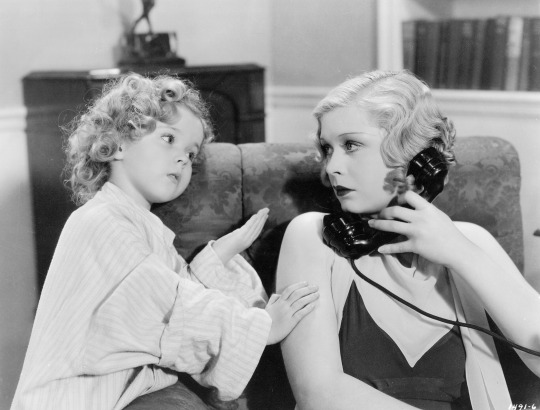
As Temple sat bored at the Academy Awards, she was surprised to hear her name announced during the ceremony. Host and humorist Irvin S. Cobb called her “one giant among the troupers.” As she grabbed her miniature-sized award, she asked, “Mommy may we go home now?” according to her autobiography. “You all aren’t old enough to know what all this is about,” Cobb told Temple. Shirley’s mother told her that she received the award for “quantity, not quality,” because Temple starred in seven films in 1934.
In 1985, Temple received a full-sized award, as she felt the juvenile actors deserved a regulation-sized award like everyone else, according to Claude Jarman, Jr.’s autobiography.
Mickey Rooney and Deanna Durbin, 1938 at the 11th Annual Academy Awards:
The second time the special award was presented was to two juvenile actors: Mickey Rooney, 18, and Deanna Durbin, 17. They received the award for “their significant contribution in bringing to the screen the spirit and personification of youth and as juvenile players setting a high standard of ability and achievement.”
“Whatever that meant,” Rooney commented in his autobiography on the award.
This was Durbin’s only recognition from the Academy. The following year, Rooney received his first adult nomination for BABES IN ARMS (’39). In total, he received four other competitive awards as an adult, and received one Honorary Award in 1983 in recognition of “50 years of versatility in a variety of memorable film performances.”
Judy Garland, 1939 at the 12th Annual Academy Awards:
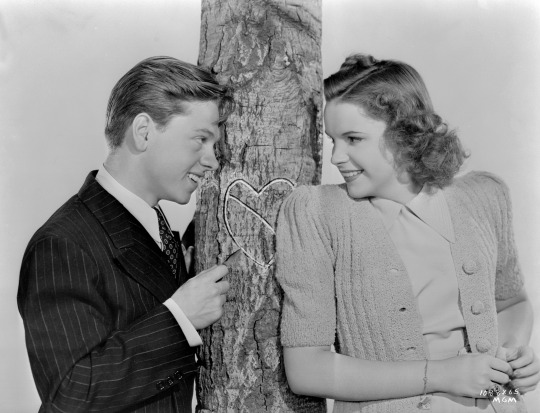
Judy Garland, 17, was presented her Juvenile Academy Award by her frequent co-star Mickey Rooney. Garland received her award for “her outstanding performance as a screen juvenile during the past year” for her performances in BABES IN ARMS (’39) and THE WIZARD OF OZ (’39). Garland wouldn’t be recognized with a nomination by the Academy again until her 1954 performance in A STAR IS BORN. Garland reported losing the Juvenile Award in 1958, and it was replaced by the Academy at her own expense.
Margaret O’Brien, 1944 at the 17th Annual Academy Awards
Margaret O’Brien, 7, received the Juvenile Academy Award “for outstanding child actress of 1944” for the film MEET ME IN ST. LOUIS (’44). When Margaret O’Brien received her Oscar, she said she wasn’t really that interested in it at the time. “I was more excited about seeing Bob Hope. I was more interested in meeting him than the Oscar that night,” she said, quoted by her biographer.
In 1958, O’Brien’s award was lost. Her housekeeper, Gladys, took the Juvenile Academy Award home to polish and didn’t return. A short time after, Gladys was put in the hospital for a heart condition and the award was forgotten. When Margaret reached out later about the award, the maid had moved, according to her biographer.
Nearly 40 years later, two baseball memorabilia collectors — Steve Meimand and Mark Nash— returned the award to O’Brien in 1995. The men had bought it at a swap meet in Pasadena, according to a Feb. 9, 1995, news brief in the Lodi New-Sentinel. “I never thought it would be returned,” she said in 1995. “I had looked for it for so many years in the same type of places where it was found.” In 2001, O’Brien donated her Oscar to the Sacramento AIDS Foundation.
Peggy Ann Garner, 1945 at the 18th Annual Academy Awards

After appearing in films since 1938, Peggy Ann Garner’s breakout role was in the film adaptation of A TREE GROWS IN BROOKLYN (’45). That year at the Academy Awards, 14-year-old Garner was recognized with the Juvenile Award “for the outstanding child actress of 1945.” It was an unexpected honor for Garner, who was confused why she was asked to sit in an aisle seat. She thought it was a mistake when her name was announced, according to Dickie Moore’s book on child actors.
Claude Jarman Jr., 1946 at the 19th Annual Academy Awards
Claude Jarman Jr. was plucked from his home in Knoxville, Tenn. and thrust into stardom when director Clarence Brown selected him for the lead role in THE YEARLING (’46). Jarman wrote in his autobiography that he gave a brief speech saying it was a thrilling moment and “This is about the most exciting thing that can happen to anybody.” However, later admitted that at age 12 the significance of the award escaped him. Following Shirley Temple’s example, Jarman also later received a full-sized Academy Award.
Ivan Jandl, 1948 at the 21st Annual Academy Awards

Ivan Jandl received the Juvenile Academy Award in his only American film, making him the first Czech actor to receive an Academy Award. At age 12, Jandl was recognized for his “outstanding juvenile performance of 1948 in THE SEARCH (’48).” The film was one of only five films Jandl starred in. Jandl was not permitted by the Czechoslovakia government to travel to the United States to accept his award, which was accepted on his behalf by Fred Zinnemann, who directed THE SEARCH.
Bobby Driscoll, 1949 at the 22nd Annual Academy Awards
Bobby Driscoll received the award for “the outstanding juvenile actor of 1949” after appearing in the film-noir THE WINDOW (’49), as well as his performance in the Disney film SO DEAR TO MY HEART (’48). “I’ve never been so thrilled in my life,” 13-year-old Driscoll said when he accepted the award.
Jon Whiteley and Vincent Winter, 1954 at the 27th Annual Academy Awards
Scottish actors Jon Whiteley, 10, and Vincent Winter, 7, co-starred as brothers in THE LITTLE KIDNAPPERS (’53). The co-stars were awarded for their “outstanding juvenile performances in The Little Kidnappers.” Whiteley’s parents wouldn’t let him attend the award’s ceremony, so it was mailed to him. "I remember when it arrived, hearing it was supposed to be something special, I opened the box and I was very disappointed. I thought it was an ugly statue," Whiteley said in a 2014 interview.
Vincent Winter was also not present for the award, so Tommy Rettig accepted the award on behalf of both actors.
Hayley Mills, 1960 at the 33rd Annual Academy Awards

The last Juvenile Academy Award was award to Hayley Mills, 14, in 1960 for her role in POLLYANNA (’60). The award was presented by the first winner of the Juvenile Award, Shirley Temple. Mills was unable to attend, and it was accepted on her behalf by fellow Disney star Annette Funicello.
In a 2018 interview, Mills said she didn’t know she had received it until it arrived at her home. Mills was in boarding school in England at the time of the ceremony. “I didn’t know anything about it until it turned up. Like, ‘Oh, that’s sweet. What’s that?’ I was told, ‘Well, this is a very special award,’ but it was quite a few years before I began to appreciate what I had,” she said in a 2018 interview.
The Aftermath
Throughout the tenure of the honorary Juvenile Academy Award, other children were still occasionally nominated, including Bonita Granville, 14, for THESE THREE (’36); Brandon de Wilde, 11, for SHANE (’53); Sal Mineo, 17, for REBEL WITHOUT A CAUSE (’55) and Patty McCormack, 11, for THE BAD SEED (’56).
Once Patty Duke, 16, won the Academy Award for Best Actress in a Supporting Role in 1963 for THE MIRACLE WORKER (’62), the honor was discontinued. Following Duke, Tatum O’Neal, 11, received the award for Best Supporting Actress for PAPER MOON (’73).
In recent years, there has been discussion about bringing the award back. In a 2017 Hollywood Reporter article, the argument was made that after the discontinuation of the award, fewer children have been recognized by the Academy. The performance of Sunny Pawar in LION (2016) wasn’t nominated, which was viewed as a snub, according to a 2017 Hollywood Reporter article. Other children haven been nominated in major categories, like Quvenzhane Wallis for BEASTS OF THE SOUTHERN WILD (2012), which to date makes her the youngest nominee for Best Actress in a Leading Role, and Jacob Tremblay in ROOM (2015). But the last time a child has won a competitive award was Anna Paquin for THE PIANO (1993).
#child actors#juveniles#Academy Awards#Oscars#child awards#Academy history#film history#Shirley Temple#Mickey Rooney#Judy Garland#Claude Jarman Jr#TCM#Turner Classic Movies#Jessica Pickens
118 notes
·
View notes
Text
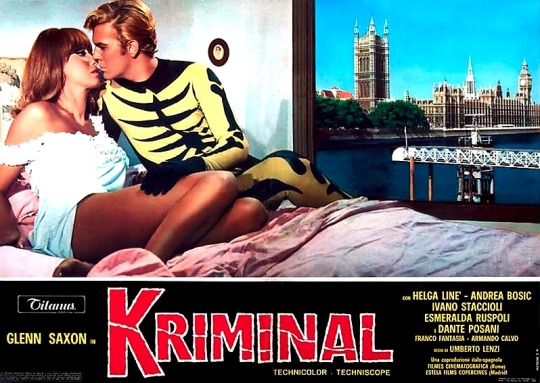


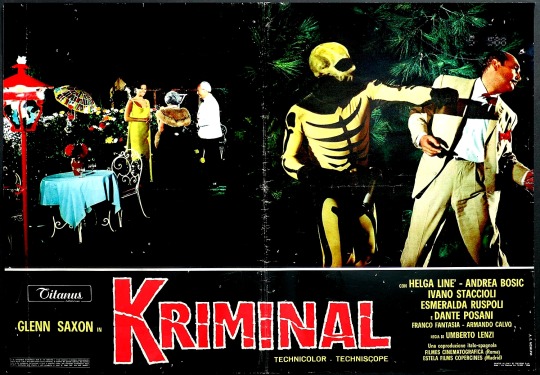



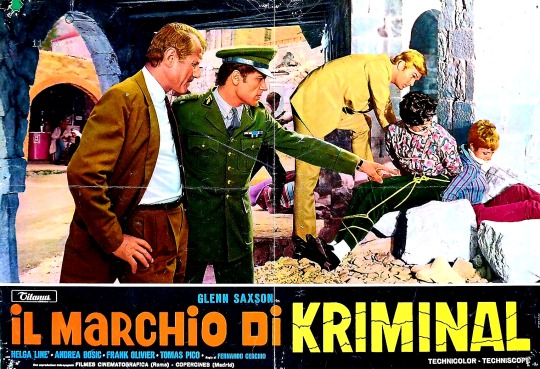

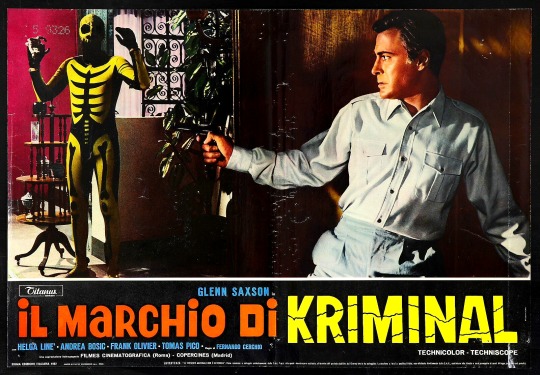
HAPPY BIRTHDAY/ Buon Compleanno...
Glenn Saxon
Glenn Saxson as Roel Bos (L'Aia 05/03/1942)
(Italian 🇮🇹 FOTOBUSTA for KRIMINAL & IL MARCHIO DI CRIMINAL)
KRIMINAL (1966)
98′ – Regia di Umberto Lenzi.
con Glenn Saxon (Kriminal) Andrea Bosic (Milton)
Helga Liné, Ivano Staccioli, Franco Fantasia, Mary Arden, Esmeralda Ruspoli.
Kriminal sta per essere giustiziato a Londra, ma con un abile stratagemma riesce a fuggire e compie anche un grosso colpo, trafuga il tesoro della regina. Inizia poi una spietata caccia al fuggitivo da parte dell’ispettore Milton di New Scotland Yard che lo porterà sino a Istambul in Turchia dove si compirà il dramma.
Il finale è stato realizzato da panel a fumetti che non sono stati graditi dai critici dell’epoca.
IL MARCHIO DI KRIMINAL (1967)
85′ – Regia di Fernando Cerchio.
Con Glenn Saxon (Kriminal) Andrea Bosic (Milton)
Elga Liné, Armando Francioli, Tomas Pico, Evi Rigano, Anna Zinnemann.
Dopo il successo del primo film, Kriminal ha un sequel.
La storia: a seguito del ritrovamento di una mappa, Kriminal parte per la Spagna, poi per il Libano alla ricerca di preziosi dipinti rubati sempre inseguito dall’irriducibile ispettore Milton.
Anche in questo film sono stati usati dei panel a fumetti, stavolta intercalando la narrazione, che non hanno mai ottenuto dalla critica alcun gradimento.
#glenn saxon#helga linè#helga line#cinefumetto#cinefumetti#cinefilm#cinefantastique#umberto lenzi#fernando cerchio#giallo film#giallo#giallo movies#italian giallo#giallo films#giallofever#giallo fever#italian cult movies#cult movies#cult films#max bunker
3 notes
·
View notes
Text
The Sister of Ursula (1978) AKA La Sorella di Ursula

Directed by Enzo Milioni
Screenplay by Enzo Milioni
Music by Mimi Uva
Country: Italy
Running time: 90 minutes
CAST
Stefania D’Amario as Dagmar
Barbara Magnolfi as Ursula
Vanni Materassi as Roberto
Marc Porel as Mister Nardi
Yvonne Harlow as Stella Shining
Antiniska Nemour as Jenny
Anna Zinnemann as Vanessa
Giancarlo Zanetti as Fillipo
Alice Gherardi as Young Girl Victim
Roberto De Ruggeriis as Young Man Victim
Danila Trebbi as Prostitute Victim

Thief Note: I stole the images from IMDB because the screengrabs looked like hot poop. (see review).
The Sister of Ursula is a giallo so grubbily sleazy it actually slips out of the already hardly wholesome giallo genre and thrusts itself urgently into the erotic thriller genre. Like many erotic thrillers (all?) The Sister of Ursula is anything but erotic and very rarely thrilling. Which is a shame as there are occasional glimpses of a decent giallo in-between the unlovely and far too numerous grapplings.

The titular sister of Ursula is Dagmar (Stefania D’Amario), who despite the title plays second fiddle to Ursula throughout and her role isn’t really worth the prize of the title. Unless she won it for the tender scene where she strokes herself off with a gold necklace. Otherwise, she’s very passive, her main function being to coddle Ursula (Barbara Magnolfi), a singularly unpleasant young woman who is always getting up in people’s faces with a sour truculence the envy of adolescents the world over. The two are staying in a tremendously 1970s hotel which is possibly the best character in the movie with its scintillatingly tasteless décor. Maybe it’s because I am English but I far preferred looking at the archaic vulgarity of the interior décor than I did the bits where people pawed each other’s slack flesh. Although these scenes of anti-erotica did contain a complementary profusion of archaic exterior décor in the form of many a wayward pubic thatch. Delightfully, in one of these grubby failures of arousal a gentleman is getting busy down under and the scene is shot so it looks like his well-coiffed hair is being worn by his paramour as a comedy merkin. But I digress…

It takes a while for the movie to get around to a plot since it is far more important for us to watch Dagmar take off her sensible travelling underwear of suspenders and panties, watch a sex worker (or in 1970’s Italian movie parlance: ”a whore”) get murdered and listen to Stella Shining (Yvonne Harlow) sing her one (terrible) song in the hotel nightclub. In the nearest thing the movie gets to a motif the song is about eyes and there are a lot of shots of the killer’s eyes and loads of voyeurism and Ursula has a stand out scene where she insanely monologues to a melty statue of Christ about eyes and in a way are we the audience not indicted by the very act of our watch.., okay, the movie doesn’t get very near a motif at all, but it’s sure some song that Stella Shining song. Yes, I did mention a murder because it turns out that Dagmar and Ursula’s arrival at the hotel has coincided with the start of a spate of nasty sex murders. And they are pretty nasty, even for a giallo. The killer has a penchant for watching a couple rut then moving in to dispatch the woman with what looks from the silhouette which always accompanies its unveiling rather like a large penis; a penis large enough to kill. I admit that the first time this occurred I paused and reflected on the many poor life choices that had led to me watching this pretty seedy 1970s Italian movie in 2020. Not because it looked like I was watching a movie where women were murdered by a killer possessing a monumental honker, but because the picture was so poor I had to kind of work out what that was a silhouette of. It’s 2020 I shouldn’t have to squint to make out the silhouette of a massive killer penis!
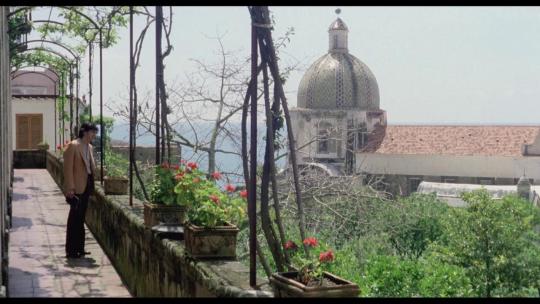
Throughout the movie, which I watched on Amazon prime courtesy of Shameless, I kept wishing the picture quality was better; mainly because the hotel furnishings were so fabulous, some of the fashions were incredible and the location of the Amalfi Coast(?) is a soothingly beautiful sight in-between the unedifying bouts of bumping uglies. It does, however, serendipitously give everything the look of postcards faded over time. So if Anna “The Love Witch” Biller is thinking of wasting a year of her life and several million dollars making a giallo set in a 1970s holiday resort shot so it looks like it’s a series of old postcards, could someone show her this movie first? Thanks. Unintentionally then, the shit picture quality actually does the movie a favour. But looking at the images here, which I stole from IMDB, show how it should look. Where possible I watch these kinds of movies (that is foreign movies, not killer penis movies) with subtitles and I can report the subtitles were pretty good throughout. But just for future reference, subtitlers of the world, you can take the vernacular thang too far. The only time I expect to hear Italians in the 1970s talking about wanting “a good shag” is when they are talking about tobacco or rugs. Otherwise it’s just jarring. These people are clearly not from Sheffield. I mean, coyness is not really appropriate; this is a movie where post coital women are disembowelled by a massive penis, I think we can cope with the word “fucking.”

Despite the intrusive, over long and decidedly flaccid scenes of unerotica The Sister of Ursula is quite entertaining. But the best bits are the bits the people who made it gave the shortest shrift; the giallo bits. For starters, the killer wears black leather gloves and a big hat in the OG giallo style and there is a marvellously befuddling concoction of plot threads. Not only is there a killer, they also appear to be armed not just with a blade (for the dispatching of gentlemen) but also a phallus of malice! Dagmar and Ursula are searching for their estranged mother after their father killed himself over his impotence, but Ursula believes her father still visits her and may be the killer, despite being, you know, dead, but a helpful local doctor explains that perhaps Ursula’s latent psychic powers have been triggered by the trauma of her father’s death, this apparently being “common” among adolescents, Dagmar tries to hook up with a suave drug addict who is maniacally jealous of the promiscuous Stella Shining, who may be involved in drug trafficking with the hotel owner, whose wife is leaving him for a young strumpet. There’s a lot going on is what I’m getting at, and a bit more room for those bits to breathe would have done the movie wonders. Unfortunately it shudders to a halt far too often to shed its kecks and ruin the mood. But for giallo fans, who are a breed apart from normal movie fans, there’s lots about The Sister of Ursula to love, not least the final reveal of the murder weapon.

#La Sorella di Ursula#The Sister of Ursula#Enzo Milioni#Stefania D’Amario#Barbara Magnolfi#Giallo#Movies#Italy#The 1970s#1978
4 notes
·
View notes
Video
'Who is that man?’ by Mario Migliardi
dal film "Prega il morto e ammazza il vivo" di Joseph Warren (Giuseppe Vari) - 1971. con Klaus Kinski, Paul Sullivan, Victoria Zinny, Patrizia Adiutori, Anna Zinnemann, Aldo Barberito, Dean Strafford, Fortunato Arena
One of the strangest soundtracks ever to be included in a Western, from the ever-surprising Mario Migliardi. (via Ciccio Formaggio)
1 note
·
View note
Text
Well hey kiddos! I’m gonna post a goddamn list! These are the top thirty films I watched for the first time in 2016!
Third annual! Previous years can be found here and here.
Rules as always: 1) movies must have been new to me; 2) no movies from 2016 or 2015.
OH BOYYYYYY!
It’s Such a Beautiful Day / dir. Don Hertzfeldt / 2012 / USA
Children of Paradise / dir. Marcel Carné / 1945 / France
The Man Who Shot Liberty Valance / dir. John Ford / 1962 / USA
Paris is Burning / dir. Jennie Livingston / 1990 / USA
Kes / dir. Ken Loach / 1969 / UK
Mommy / dir. Xavier Dolan / 2014 / Canada
The Wind / dir. Victor Sjöström / 1928 / USA
House / dir. Nobuhiko Obayashi / 1977 / Japan
Babe: Pig in the City / dir. George Miller / 1998 / Australia-USA
Man with a Movie Camera / dir. Dziga Vertov / 1929 / Soviet Union
Ménilmontant / dir. Dimitri Kirsanoff / 1926 / France
The Ox-Bow Incident / dir. William A. Wellman / 1943 / USA
I Was Born, But... / dir. Yasujiro Ozu / 1932 / Japan
Trouble in Paradise / dir. Ernst Lubitsch / 1932 / USA
The Gospel According to St. Matthew / dir. Pier Paolo Pasolini / 1964 / Italy
In the Loop / dir. Armando Iannucci / 2009 / UK
The Circus / dir. Charlie Chaplin / 1928 / USA
Russian Ark / dir. Alexander Sokurov / 2002 / Russia-Germany-Canada-Finland
The Innocents / dir. Jack Clayton / 1961 / UK
Ballad of a Soldier / dir. Grigori Chukhrai / 1959 / Soviet Union
The Player / dir. Robert Altman / 1992 / USA
My Man Godfrey / dir. Gregory La Cava / 1936 / USA
3 Women / dir. Robert Altman / 1977 / USA
Broken Blossoms / dir. D. W. Griffith / 1919 / USA
Woman in the Dunes / dir. Hiroshi Teshigahara / 1964 / Japan
Life is Sweet / dir. Mike Leigh / 1990 / UK
Diary of a Country Priest / dir. Robert Bresson / 1951 / France
Amarcord / dir. Federico Fellini / 1974 / Italy
Harakiri / dir. Masaki Kobayashi / 1962 / Japan
Naked / dir. Mike Leigh / 1993 / UK
For funsies: the five “worst” movies I saw this year! Same rules apply. 1 is the worst, 10 is the least worst.
(Shout-out to Jupiter Ascending [2015] for being the worst movie I saw this year but the rules disqualify it. Shout out to The Danish Girl for being the second worst but still disqualified. Shout out to Eddie Redmayne, an actor I genuinely like a lot, for being in both of them. Congrats on your Oscar, brah.)
Julia / dir. Fred Zinnemann / 1977 / USA
The Country Girl / dir. George Seaton / 1954 / USA
The Passion of the Christ / dir. Mel Gibson / 2004 / USA
Newsies / dir. Kenny Ortega / 1992 / USA
Anna Karenina / dir. Joe Wright / 2012 / UK
Some misc. stats that zero (0) people care about:
Oldest movie: The Great Train Robbery (1903)
Most watched director: Orson Welles (Citizen Kane, 1941; The Magnificent Ambersons, 1942; The Lady from Shanghai, 1947; Chimes at Midnight, 1965)
Most watched country (not including USA): UK (29 films)
Total movies watched: 180
First movie watched in 2016: Carol (dir. Todd Haynes, 2015)
Final movie watched in 2016: Fences (dir. Denzel Washington, 2016)
Month with most movies watched: August (27 movies)
Month with least movies watched: June and November (8 movies)
10 notes
·
View notes
Text
The Sister of Ursula (1978) watch sexploitation
The Sister of Ursula (1978) watch sexploitation
Year: 1978
Duration: 01:34:52
Directed by: Enzo Milioni
Actors: Barbara Magnolfi, Stefania D’Amario, Anna Zinnemann, Antiniska Nemour
Language: Italian (English subs)
Country: Italy
Also known as: Curse of Ursula
Description: Well, it’s safe to say that The Curse of Ursula isn’t the greatest Giallo ever made, but there’s plenty of sex and sleaze, and the whole thing is at least enjoyable. The…
View On WordPress
0 notes
Text
Holocaust Remembrance: Those Who Survived and Came to Hollywood By Raquel Stecher
Officially established by the United Nations in 2005, January 27th is International Holocaust Remembrance Day. This day honors the 6 million Jewish victims as well as the millions of other victims of the Holocaust. It also marks the anniversary of the 1945 liberation of Auschwitz-Birkenau by the Red Army.
From the time Hitler came to power and throughout WWII, actors, directors, producers, composers, production designers and other members of the European film industry emigrated to Hollywood to escape the Nazi regime and to begin a new phase in their careers. Some artists fled at the first sign of trouble, others were able to escape even in the face of real danger while others were interred in concentration camps and German POW camps. Many lost family members, some nearly lost their own lives but, in the end, they persevered in the face of adversity and lived to tell the tale. Here are some of their extraordinary stories.
Michael Curtiz
According to Michael Curtiz biographer Alan K. Rode, the director did everything he could to get his family out of Hungary. Curtiz arranged transport for his mother and got her housing in Los Angeles. He relocated his brothers David and Gabriel to Tijuana, Mexico where they waited for two years before being allowed entry into the United States. And Curtiz may have employed the help of Jack and Harry Warner to get the U.S. Army Air Corps to transport his sister out of Hungary. Curtiz’ brother Lajos and sisters Regina, Margit and Kornelia decided to stay behind. Margit and her family were eventually interned in Auschwitz and while Margit and her daughter survived, her husband and second child did not.
Audrey Hepburn
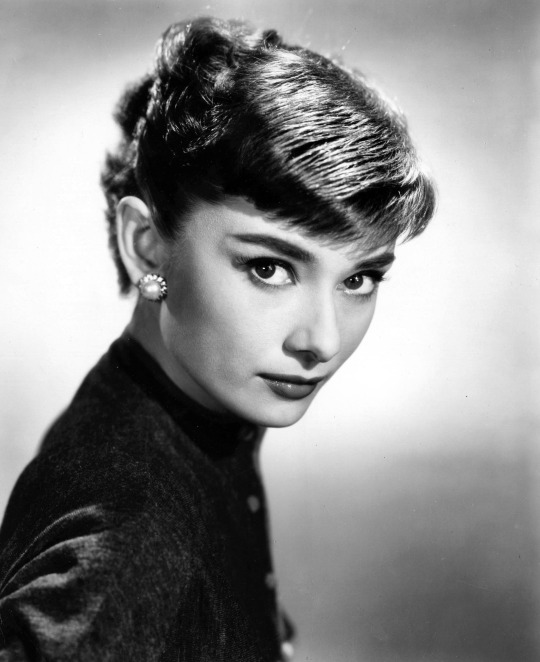
Born in Belgium but raised in England, Audrey Hepburn’s parents were pro-Fascists. After their separation, Audrey’s mom Ella moved the family to the Netherlands and joined the Dutch resistance. Before becoming an actress, Hepburn studied as a dancer and her skills were put to good use when she was commissioned by local resistance leader Dr. Hendrik Visser‘t Hooft to perform dance numbers at underground meetings known as “zwarte avonden”, aka black evenings. This was a way to earn money to help fund the Dutch resistance’s efforts to hide or transport Jews across the country.
Martin Kosleck
German actors who fled Europe for America often found themselves playing Nazis in Hollywood productions. Actor Martin Kosleck played Minister of Propaganda Joseph Goebbels 5 times including a role in CONFESSIONS OF A NAZI SPY (‘39), considered the first anti-Nazi film. Kosleck himself was an outspoken opponent to Hitler and the Third Reich and fled Germany in 1931 when a warrant was issued for his arrest. A few years after he left, he was placed on the list of Gestapo’s “undesirables” and was tried and sentenced in absentia but remained safe in Hollywood.
Fritz Lang
Lang’s celebrated film METROPOLIS (‘27) was one of Adolph Hitler’s favorite films. The director caught the eye of both Hitler and Goebbels, the latter had even offered Lang the job of head of the German Cinema Institute which Lang eventually declined. Shortly after the premiere of THE TESTAMENT OF DR. MABUSE (‘33), Goebbels banned the film for inappropriate use of Nazi party slogans. Lang claimed that Goebbels then offered him another job as production supervisor at UFA which he declined. Lang’s Jewish heritage was no problem because according to Goebbels “we’ll decide who’s Jewish!” Lang wisely left Germany for Paris and eventually made it to Hollywood. His soon-to-be ex-wife and longtime collaborator Thea von Harbou joined the Nazi party and eventually wrote and directed propaganda films.
Curt Lowens
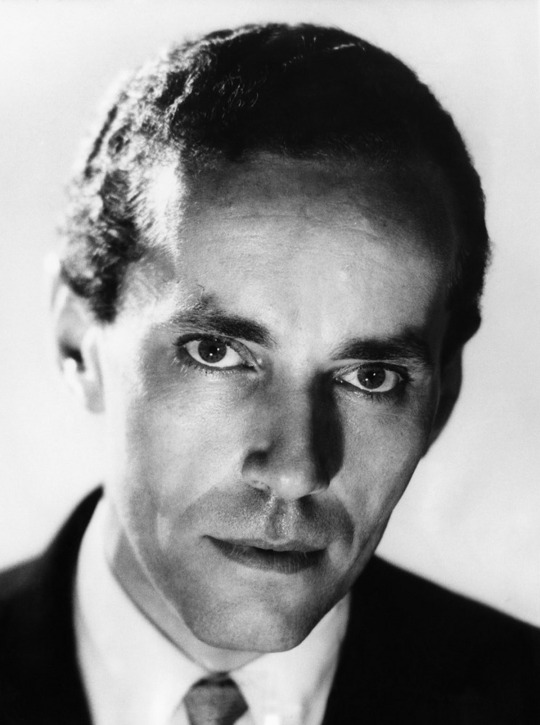
Actor Curt Lowens’ story of surviving the Holocaust was one of bravery and sheer luck. Born in Poland, Lowens’ father was a highly respected attorney and his mother was an active member of the local Jewish community. His father moved the family to Berlin in hopes that he would find more work among the large Jewish community in that city. As the political climate changed, the Lowens planned to emigrate to the US by way of the Netherlands but the Germans invaded the day they were supposed to leave. Lowens’ father’s connections helped saved them from deportation to Auschwitz and eventually got them out of Westerbork. The family went into hiding and Curt Lowens changed his name to Ben Joosten and became an active member of the Dutch resistance. On V-E Day, Lowens rescued two members of the US Army Air Corps for which he received a commendation from General Dwight Eisenhower.
Branko Lustig
Croatian producer Branko Lustig is best known for his work on SCHINDLER’S LIST (‘93). Lustig himself was a survivor of both the Auschwitz and Bergen-Belsen concentration camps. In his acceptance speech for the Best Picture Oscar for SCHINDLER’S LIST, Lustig said, “My number was 83317. I’m a Holocaust survivor. It’s a long way from Auschwitz to this stage. I want to thank everyone who helped me to come so far. People died in front of me at the camps. Their last words were ‘be a witness of my murder. Tell to the world how I died. Remember.’” Lustig hoped that his work on the film helped fulfill his obligation to the innocent victims of the Shoah and that we will never forget what happened to them.
S.Z. Sakall
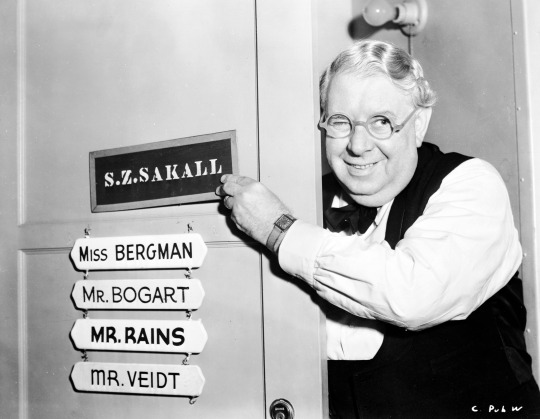
The actor affectionately known as “Cuddles” was born Gero Jeno in Hungary in 1883. Early in his acting career he changed his name to Szöke Szakall (aka Blonde Beard) which was later shortened to S.Z. Sakall. The Jewish Sakall performed on stage and in film in Hungary and Austria. In his autobiography he remembers a chance meeting with Hitler, who openly criticized Sakall’s recent picture A CITY UPSIDE DOWN (‘33). Years later Sakall and his second wife Anna Kardos fled for Hollywood. Many members of Sakall’s family, including sisters, nieces and in-laws died in concentration camps. Sakall almost turned down the role of Carl the head waiter in CASABLANCA (‘42) because he thought it might be too much to bear.
Roman Polanski
Born in France but raised in Poland, by the age of nine Roman Polanski and his parents were deported and separated from each other. In an interview with the Hollywood Reporter, Polanski recalls that his pregnant mother was most likely killed upon arrival to Auschwitz. His father was interned at the Mauthausen camp in Austria and managed to survive the ordeal. Polanski himself avoided the concentration camps by changing his name to Romek Wilk and fleeing to the countryside where he hid until the liberation. His experiences influenced his film THE PIANIST (2002) although he claims that the film was in no way autobiographical.
Douglas Sirk
In 1934, the German director divorced his first wife Lydia with whom he had a son Klaus. Both Lydia and Klaus joined the Nazi party and because Sirk’s second wife Hilde was a Jewish woman he was not permitted to have contact with his son. Klaus was a child actor in numerous Nazi propaganda films and eventually served as a soldier in the German army and died on the battlefield in 1944. While filming in the Netherlands in the late 1930s, Sirk was contracted by Warner Bros. and he and his wife fled the Nazi regime for a new life in Hollywood.
Otto Preminger
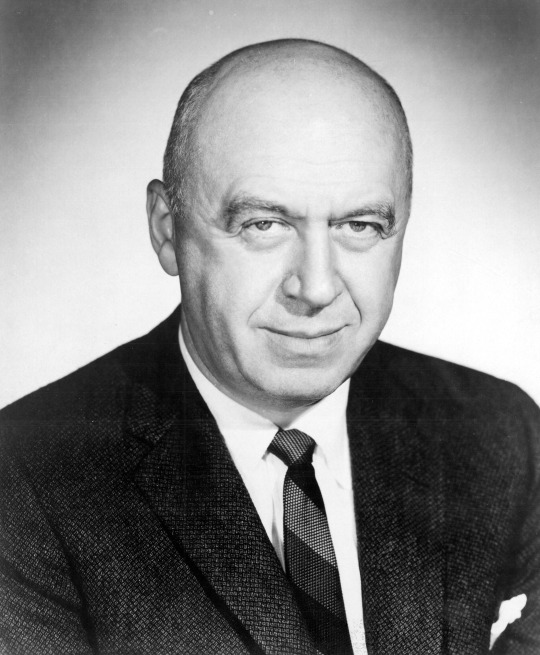
A few years before Otto Preminger moved to Hollywood, he was offered the position of director of Austria’s state-run theater, the Burgtheater, which required that he convert from Judaism to Catholicism. Preminger turned down the offer. This was a good decision on Preminger’s part because it allowed him to later take Joseph Schenck’s invitation to work in Hollywood. Also, religious conversion would not have protected Preminger from the Nazi regime. Preminger left in 1937 and his parents and brother stayed behind. When Austria was invaded in 1938, they found refuge in Switzerland.
Conrad Veidt
The German born star of films like THE CABINET OF DR. CALIGARI (‘20) was not Jewish himself but stood in solidarity with wife Lily who was. When Goebbels required actors in the German film industry to declare their race Veidt made the bold decision to declare himself on the form as Jude (Jew). This infuriated Goebbels who proclaimed that Veidt would never work in Germany again. He and his wife fled for England in 1933 and later emigrated to Hollywood. Veidt would go on to play Nazis on screen including his part as Major Strasser in CASABLANCA.
Fred Zinnemann
Austrian director Fred Zinnemann started off as a concert violinist and a law student before transitioning to a career in film. He left for Hollywood in 1929 seeking better opportunities. His film THE SEVENTH CROSS (‘44) was one of the first to acknowledge the existence of concentration camps. Unfortunately, Zinnemann lost both of his parents in the Holocaust. According to a page of testimony Zinnemann filed on behalf of his parents for the Martyrs’ and Heroes’ Remembrance Authority in 1984, his mother Anna most likely died in Auschwitz in August 1942 and his father Oskar died in Belzec around December 1941.
#Holocaust Remembrance#actors#Hollywood#TCM#Turner Classic Movies#Raquel Stecher#audrey hepburn#WWII#Fritz Lang#Otto Preminger#Douglas Sirk#Michael Curtiz
227 notes
·
View notes
Photo


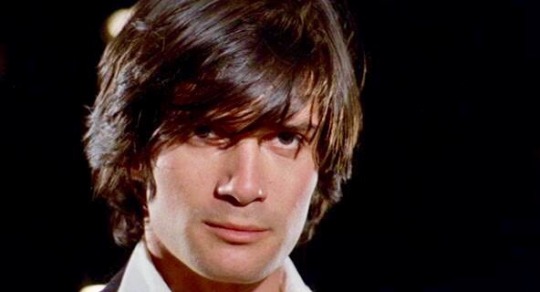

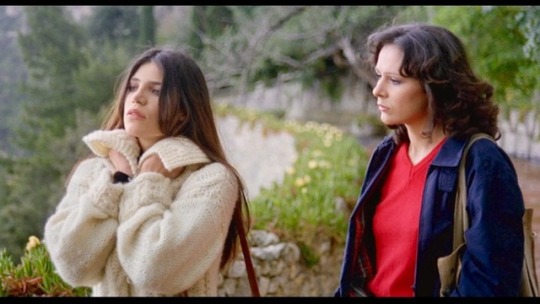
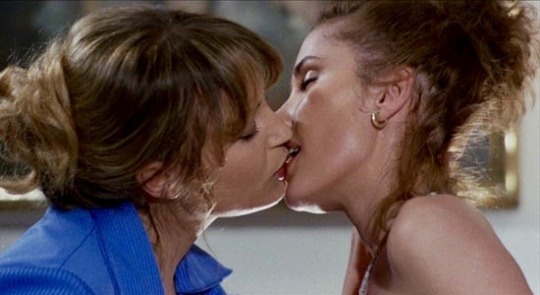

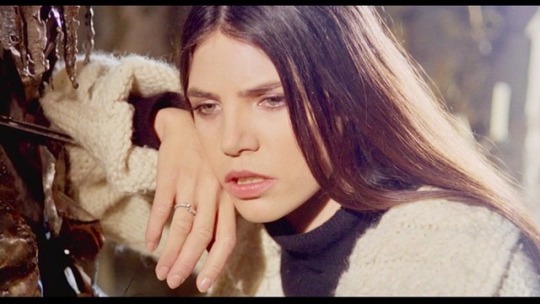

Movie scenes taken from the New Transfer of Le Chat Qui Fume 1978 La sorella di Ursula Also Known As (AKA) Curse of Ursula France La soeur d'Ursula Peru La hermana de Ursula USA The Sister of Ursula Directed by Enzo Milioni Music by Mimi Uva Writing Credits Enzo Milioni ... (story) Enzo Milioni ... (screenplay) Release Dates Italy 18 October 1978 Cast (in credits order) Barbara Magnolfi Barbara Magnolfi... Ursula Beyne Stefania D'Amario Stefania D'Amario ... Dagmar Beyne Marc Porel Marc Porel... Filippo Andrei / Gianni Nardi Anna Zinnemann Anna Zinnemann ... Vanessa Antiniska Nemour Antiniska Nemour ... Jenny (as Antinisca Nemour) Yvonne Harlow Yvonne Harlow ... Stella Shining Vanni Materassi Vanni Materassi ... Roberto Delleri Giancarlo Zanetti Giancarlo Zanetti ... The Psychologist Alice Gherardi Alice Gherardi ... The Young Fiancée Roberto De Ruggeriis Roberto De Ruggeriis Rest of cast listed alphabetically: Danila Trebbi Danila Trebbi ... Killed Prostitute (uncredited) filming locations Amalfi, Salerno, Campania, Italy Ravello, Salerno, Campania, Italy technical specifications Runtime 1 hr 36 min (96 min) (USA) 1 hr 35 min (95 min) (uncut) (Italy) Aspect Ratio 1.85 : 1 Negative Format 35 mm Printed Film Format 35 mm
#la sorella di ursula#la hermana de ursula#course of ursula#the sister of ursula#la soeur d'ursula#barbara magnolfi#stefania d'amario#stefania damario#marc porel#enzo milioni#lesbian#lesbism#lesbo#lesbismo#lesbiche#lesbian movie#lesbo movie#film lesbiche#giallo fever#giallofever#giallo#gialli#italian giallo#international cult#cult#cinema cult#italian cult#shameless dvd#shameless screen entertainment#shameless video
37 notes
·
View notes